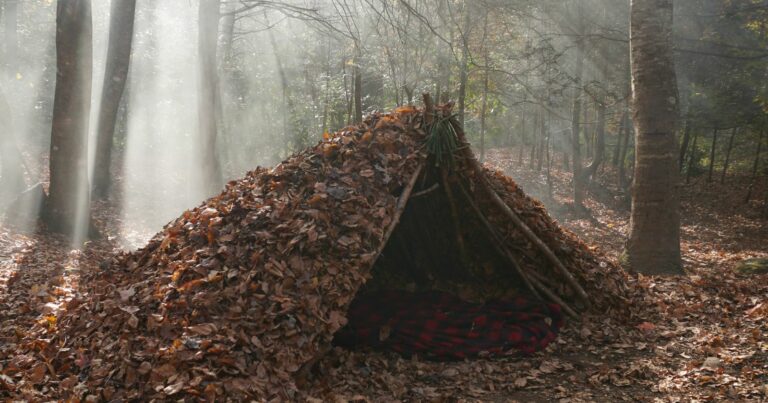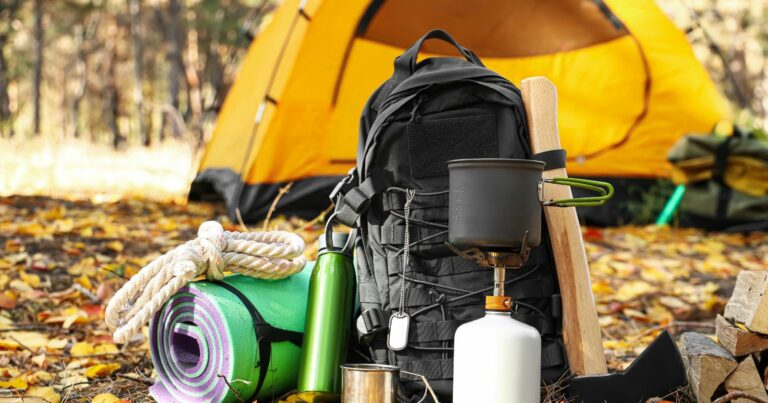How to Set Up a Tarp Without Trees
Heading into the great outdoors but don’t have any trees to hang your tarp from? Don’t worry, you can still use a tarp for shelter and shade even without having trees around. With some basic poles and ropes, you can create a standalone tarp structure just about anywhere.
Setting up a tarp without trees does require a bit more effort than just throwing it over a branch. But with the right preparation and techniques, you’ll have durable overhead coverage to protect you from sun, rain and wind.
In this post, I’ll explain step-by-step how to securely put up a tarp when there are no trees or overhead attachment points available. You’ll learn how to use trekking poles, specialty tarp poles, or even branches as stand-ins for trees. I’ll also cover how to rig the tarp for maximum stability and share tips for picking a site that will support this type of free-standing structure.
With the simple methods outlined here, you’ll be able to quickly set up a tarp in any open location and still enjoy the benefits of shade and shelter. Let’s get started!
The next section will cover the basics of what you’ll need to erect a tarp without trees. Following that, I’ll go through the setup process in detail so you can get your overhead shelter up quickly at your next campsite.
Choosing the Right Poles
The key to getting your tarp upright is having two solid, anchored poles to act in place of trees. Here are some options:
- Trekking poles – Compact and portable. Adjust length to needed height.
- Tarp poles – Specifically designed for tarps. Often collapsible for packing.
- Branches – Find dead, sturdy branches at least 1-2 inches thick.
- DIY poles – Cut PVC, bamboo or dowels to custom lengths.
Ideally, your poles should be at least 8-10 feet tall depending on the size of your tarp. Test weight capacity before relying solely on branches.
Having adjustable-height poles makes getting the perfect tautness much easier.
Securing the Tarp Poles
With your poles cut and ready, the next step is getting them firmly planted:
- Stake or drive them in – For solid ground, use a rubber mallet to drive pole ends 6+ inches deep.
- Bury them – In sand or loose soil, dig holes to bury the poles 1-2 feet deep. Pack earth around them.
- Use pole stands – Attach poles to metal stands with ground spikes to keep them erect.
- Weigh them down – Restrain base with heavy rocks or sandbags.
The goal is keeping the poles as vertically upright and immovable as possible. Don’t proceed until your test shakes show the poles are solidly anchored.
Rigging the Ridgeline
The ridgeline will be the tentpole across which you’ll stretch your tarp. Follow these steps:
- Tie rope tightly between the pole tops using a tautline hitch knot.
- Leave only 1-3 feet of space between poles and ridgeline.
- Reinforce with guy lines staked at 45 degree angles if needed.
- Adjust pole or rope lengths to create gentle slope for rain runoff.
Take time to get the ridgeline tightened and centered properly between the poles. This will make getting the tarp positioned much easier.
Hanging the Tarp Over the Ridgeline
With your ridgeline prepped, you can move onto the main event – hanging the tarp:
- Toss the tarp over the apex of the ridgeline.
- Spread it out and pull to ensure coverage of desired area.
- For rain protection, keep ridgeline in middle of tarp, not near the edge.
- For more shade, align ridgeline closer to brighter side of tarp.
- Use carabiners, tape or tarp clips to attach tarp to ridgeline rope.
The goal is keeping the tarp centered and angled optimally for your particular needs, whether that’s maximum shade or rainfall coverage.
Securing the Tarp Corners and Edges
Your tarp may billow like a sail without proper tie downs at all edges:
- Stake down corners first, pulling fabric taut before pinning.
- Working around the perimeter, continue staking 6-12 inches from edges.
- Utilize guy lines to pull outward at 45 degree angles.
- Attach restraints along both sides of ridgeline rope.
- Wrap rope around stakes 2-3 times for hold strength.
Don’t forget the back side of the tarp that faces away from the ridgeline. This edge will need stakes too.
Wind and Weather Considerations
For protection during high winds and storms:
- Point the lowest, most reinforced tarp edge into prevailing winds.
- Maintain a lower profile – don’t make the tarp too tall.
- Add lower side poles partway down for extra support.
- Weight interior edges with heavy objects like logs or rocks.
- Allow sufficient guy line length for whippage without uprooting stakes.
Take down the tarp promptly if winds become too extreme to prevent damage.
FAQs
What kind of rope should I use for the ridgeline?
Use paracord or other lightweight nylon rope that won’t stretch or sag over time. This ensures the tarp stays taut. Avoid twist tie or bungee cords that can snap.
How can I prevent the tarp from flapping in wind?
Stake down all edges tightly and utilize many guy lines pulling outward at 45 degrees for added stability. Also point the lowest reinforced tarp edge into the wind.
What if the ground is too hard to stake into?
You can place heavy objects like rocks or logs around the edges instead of stakes. Or use pole stands with spike bases if hammering stakes is not possible.
Should I angle the tarp for rain runoff?
Yes, create a slight downhill slope from ridgeline to side edges so rain can drain off. This prevents pooling on the tarp surface.
Can I use a tarp pole on just one side instead of two?
While you can technically erect a tarp with a single center pole, it won’t be very stable or wind resistant. Two anchored poles are best for keeping the tarp upright and functional in all conditions.
And that covers the key steps for erecting your tarp sans trees! With smart pole placement and thorough staking, you can create a secure overhead shelter on any bare campsite.







